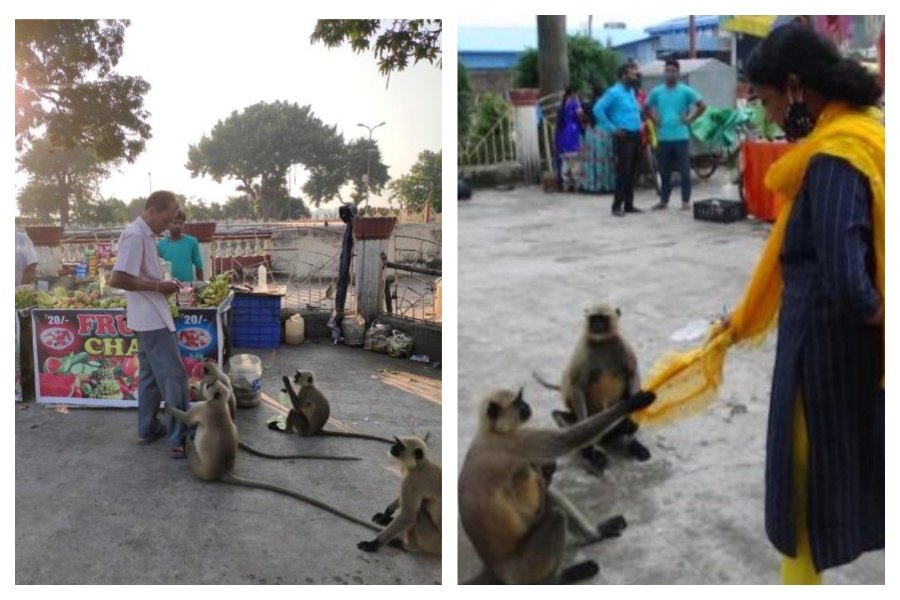Hanuman langurs living in urban landscapes have adopted seven distinct “begging” gestures to seek food from humans, scientists in Calcutta have documented after observing the primates around the Dakshineswar temple area and tourist hub.
Their research has shown that these traditional forest-dwelling monkeys assume human-like pleading behavioural gestures while foraging around people, with gestures that involve embracing people’s legs and tugging at clothes most likely to yield success.
Tourists and other visitors to Dakshineswar and other sites across India often encounter monkeys begging for food and many reward them with bananas, peanuts and bread.
The researchers at the Indian Institute of Science Education and Research (IISER), Calcutta, and Calcutta University, who set out to explore how Hanuman langurs have adapted to urban landscapes spotted repeated displays of distinct begging gestures in Dakshineswar.
“These free-ranging langurs have learnt to coexist with people and found ways to maximise their chances of getting food from humans,” said Dishari Dasgupta, a research scholar at the IISER and first author of the study just published in the scientific journal Animal Cognition.
Over two years of observations, Dishari and her colleagues analysed 1,293 begging incidents by the langurs around Dakshineswar and found that in 1,047 (81 per cent) of these incidents, the monkeys received some food from people.
They also noted that the monkeys appeared to favour certain gestures over others while begging. They tugged on people’s legs in 34 per cent of the begging incidents, embraced people’s legs in 29 per cent and engaged in bipedal begging in 17 per cent.
The other gestures involved quadrupedal begging, grabbing the hands of people and passive begging in which the monkey stands next to an actively begging monkey.
Aggressive begging through exposing teeth or voicing harsh barks while trying to touch people were rare and made up only about 1 per cent of the total incidents, the researchers said.
The most effective begging method, however, was what the researchers have called “provocation-initiated begging” in which vendors around the temple urge devotees to feed the langurs while displaying food items on their carts.
The researchers observed that the langurs, upon hearing the shouts by vendors, would hurry towards people standing near the carts and display the gestures. None of the langurs snatched or stole food directly from the cart but insisted on begging. Monkeys which embraced people’s legs or pulled on clothes also had high success rates.
The researchers, supervised by Manabi Paul, a faculty member at the University of Calcutta’s environmental science department, have also found that alongside the begging gestures, the langurs also displayed a preference for processed food.
They found some langurs even rejecting certain food items and persistently continued to beg until they received their preferred food item. “We were surprised to see langurs liked buns, sometimes even over bananas or other fruits,” said Dasgupta.
The researchers say it is unclear how exactly the langurs have learnt the begging gestures. One possible explanation is that young langurs in the troop observe and learn from adults. But that does not explain how or when the adults learned them.
“This is a subject for future work,” Dasgupta said.











